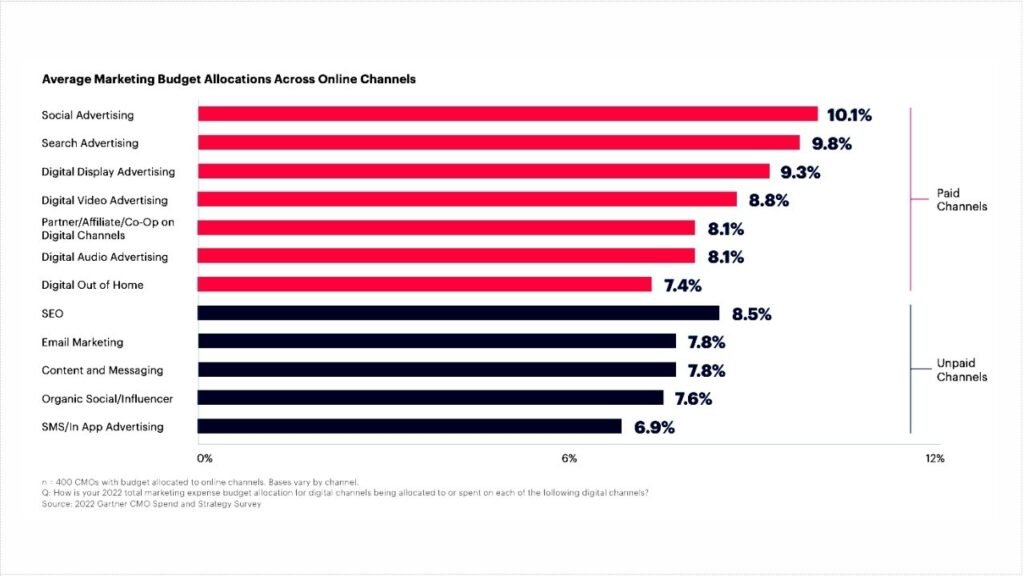
Budgeting for Digital Marketing: Where to Invest Your Money
Meta Description: Discover how to budget effectively for digital marketing. Learn where to invest your money for the best ROI across SEO, PPC, content marketing, social media, and more.
Introduction
Digital marketing is no longer optional—it’s essential. Whether you’re a startup or an established brand, knowing how to allocate your digital marketing budget can make or break your campaigns. But with so many channels to choose from—SEO, PPC, content marketing, social media, email marketing—it can be overwhelming to decide where your money should go.
In this blog post, we’ll walk you through how to budgeting for digital marketing budget, how much to spend, and most importantly, where to invest your money for maximum return on investment (ROI).
1. Understanding Your Business Goals and Audience

Before allocating a single dollar, you must define your:
- Marketing goals (brand awareness, lead generation, sales, etc.)
- Target audience (demographics, behavior, pain points)
- Sales funnel stage you want to focus on
Pro Tip: Align your budget with your business objectives. For example, if you’re a new brand looking to generate awareness, you might invest more in social media and display advertising. If you’re aiming for conversions, you may prioritize PPC and retargeting.
2. How Much Should You Spend on Digital Marketing?

Industry Benchmark
According to Deloitte and Gartner, businesses typically allocate 7% to 10% of their overall revenue to marketing, with 45-55% of that going to digital marketing.
| Annual Revenue | Marketing Budget (10%) | Digital Marketing Budget (50%) |
|---|---|---|
| \$500,000 | \$50,000 | \$25,000 |
| \$1,000,000 | \$100,000 | \$50,000 |
| \$5,000,000 | \$500,000 | \$250,000 |
3. Where to Invest Your Digital Marketing Budget

A. Search Engine Optimization (SEO)

- Cost: \$500–\$5,000/month
- Why It Matters: SEO builds long-term visibility and organic traffic.
- Best For: Sustainable growth, credibility, and top-of-funnel awareness.
What to budget for:What is SEO and How many types of SEO? Detail Guide
- On-page SEO (technical and content optimization)
- Link building
- Keyword research and analytics tools (like Ahrefs, SEMrush)
- Local SEO (for location-based businesses)
B. Pay-Per-Click Advertising (PPC)

- Cost: Variable—depends on industry and competition
- Why It Matters: Quick traffic and measurable ROI.
- Best For: Short-term campaigns, product launches, immediate lead generation.
Platforms to consider:
- Google Ads
- Bing Ads
- YouTube Ads
- Display Networks
Pro Tip: Allocate at least 20-30% of your digital budget for PPC if you want fast results.
C. Content Marketing

- Cost: \$1,000–\$10,000/month
- Why It Matters: Content drives SEO, builds authority, and engages users.
- Best For: Nurturing leads, educating customers, brand storytelling.
What to budget for:
- Blog posts and articles
- eBooks and whitepapers
- Infographics
- Video production
Bonus: Content can be repurposed across channels—great ROI over time.
D. Social Media Marketing

- Cost: \$500–\$10,000/month
- Why It Matters: Builds brand personality and engages your community.
- Best For: Brand awareness, customer engagement, B2C marketing.
Organic vs. Paid:
- Organic content builds trust but is slow-growing.
- Paid social ads (Facebook, Instagram, LinkedIn) offer hyper-targeting and quicker wins.
Tip: Don’t spread thin across all platforms—focus where your audience lives.
E. Email Marketing

- Cost: \$100–\$2,000/month
- Why It Matters: One of the highest ROI channels (\$36 return per \$1 spent).
- Best For: Nurturing leads, retention, upselling.
What to budget for:
- Email platform (e.g., Mailchimp, Klaviyo, ActiveCampaign)
- Copywriting and design
- Automation and segmentation
F. Analytics & Tools

- Cost: \$100–\$1,000/month
- Why It Matters: Without data, you’re flying blind.
- Must-Have Tools:
- Google Analytics
- Google Tag Manager
- Heatmaps (Hotjar, Crazy Egg)
- Reporting dashboards (Looker Studio, AgencyAnalytics)
4. Sample Digital Marketing Budget Breakdown

| Channel | Percentage of Budget | Example Allocation (from \$50,000) |
|---|---|---|
| SEO | 20% | \$10,000 |
| PPC | 25% | \$12,500 |
| Content Marketing | 20% | \$10,000 |
| Social Media | 15% | \$7,500 |
| Email Marketing | 10% | \$5,000 |
| Tools & Analytics | 10% | \$5,000 |
5. Tips to Maximize Your Budget

- Start small and scale: Test campaigns before pouring in big money.
- Use A/B testing: Optimize ad creatives, landing pages, and emails.
- Repurpose content: Turn a blog post into a video, infographic, or carousel.
- Automate where possible: Use marketing automation to reduce manual work.
- Monitor ROI: Cut underperforming channels and double down on winners.
Conclusion
Budgeting for digital marketing isn’t just about spending—it’s about investing wisely. Understanding your goals, knowing your audience, and allocating funds strategically across channels can help you build a powerful, ROI-driven marketing engine.
Remember, there’s no one-size-fits-all budget. But with a strategic approach, you can make every dollar count and drive meaningful growth.
FAQs: Budgeting for Digital Marketing
Q1: What’s the best channel for small businesses with a tight budget?
A: SEO and content marketing offer long-term value. Pair with low-cost PPC campaigns for immediate traction.
Q2: How often should I revise my digital marketing budget?
A: Review quarterly to adjust for performance, trends, and market shifts.
Q3: Can I handle digital marketing in-house or should I hire an agency?
A: Start in-house if you have the expertise. Consider agencies for scale, strategy, or complex campaigns.
If you found this guide helpful, feel free to share it or bookmark it for future reference. Need help building your digital marketing strategy? [Contact us for a free consultation].


